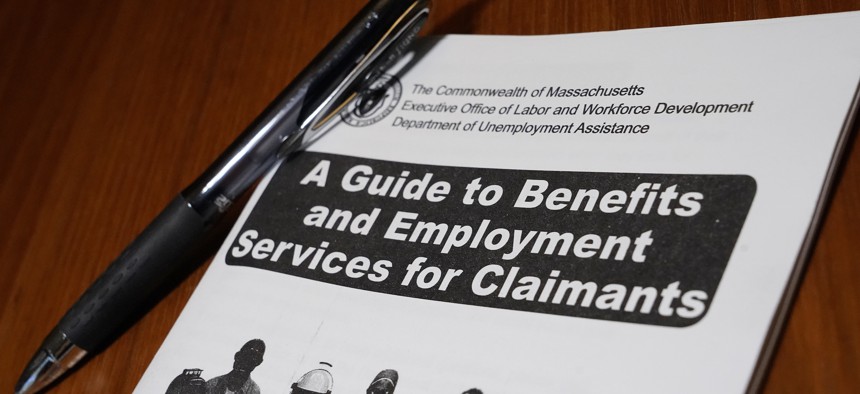States Expect Delay of Federal Unemployment Payments

A booklet describing unemployment benefits is seen on a desk, Thursday, Nov. 5, 2020, in North Andover, Mass. AP Photo/Elise Amendola
The late passage of the coronavirus relief package and new requirements for verifying benefits are complicating the rollout of payments by state unemployment agencies.
The next round of federal unemployment benefit payments for out-of-work Americans will likely be delayed state officials are warning, as they await additional guidance from the federal government on how to implement the programs.
It’s unclear how long it will take states to restart the $300-a-week federal payments, which supplement the varying amounts paid by states, the payments for so-called gig workers, or benefit extensions for those who have exhausted state aid. Several states confirmed Monday that they were still awaiting guidance from the Department of Labor on how to implement the programs, some of which include new eligibility requirements that are meant to reduce fraud.
The delay stems in part from the new requirements, as well as the late passage of the $900 billion federal coronavirus relief package, which President Trump signed into law a day after federal unemployment benefits lapsed.
“Due to the timing of the legislation's finalization, there will be a delay in certification and payment of benefits for those currently enrolled in the federal Pandemic Unemployment Assistance and Pandemic Emergency Unemployment Compensation programs beginning Dec. 26,” said Michigan’s Department of Labor and Economic Opportunity in a statement released last week.
A spokeswoman confirmed Monday that the department had received no further guidance from the federal government. Officials stressed that the disruption is temporary and that anyone eligible “will be made whole once the extensions are fully implemented.”
The Maryland Department of Labor issued a similar statement, indicating that once it received the necessary guidance it would work to “implement each program as quickly as possible.”
Congress reached a deal on the aid package before Christmas and it could have been approved before unemployment benefits lapsed. But Trump surprised many in his own administration by trashing the agreement, before finally signing it.
Based on the time it took states to initially issue federal unemployment payments and the work they’ve done to streamline the process over the last 10 months, most states will likely be able to begin issuing payments within two to three weeks, said Andrew Stettner, a senior fellow and expert on unemployment insurance at The Century Foundation.
The Department of Labor did not respond to requests for comment about the possible delays. Last week, a spokesman told The Hill that the department “does not anticipate that eligible claimants will miss a week of benefits due to the timing of the law’s enactment.”
Regardless of when payments start, states will have their hands full processing and verifying benefits because of new requirements included in the unemployment programs, Stettner said.
Independent contractors and gig workers, for example, did not have to provide records documenting their previous employment under the initial version of the Pandemic Unemployment Assistance program. But new and active claimants will now be required to provide documentation substantiating their employment beginning at the end of January.
“The states are still catching up to the backlog that they had, and they are working pretty hard to do that and they have to implement a lot of new requirements with this law,” Stettner said.
Andrea Noble is a staff correspondent with Route Fifty.
NEXT STORY: These Cities Tried to Tackle Disinvestment. Here Are Lessons From What Happened.





